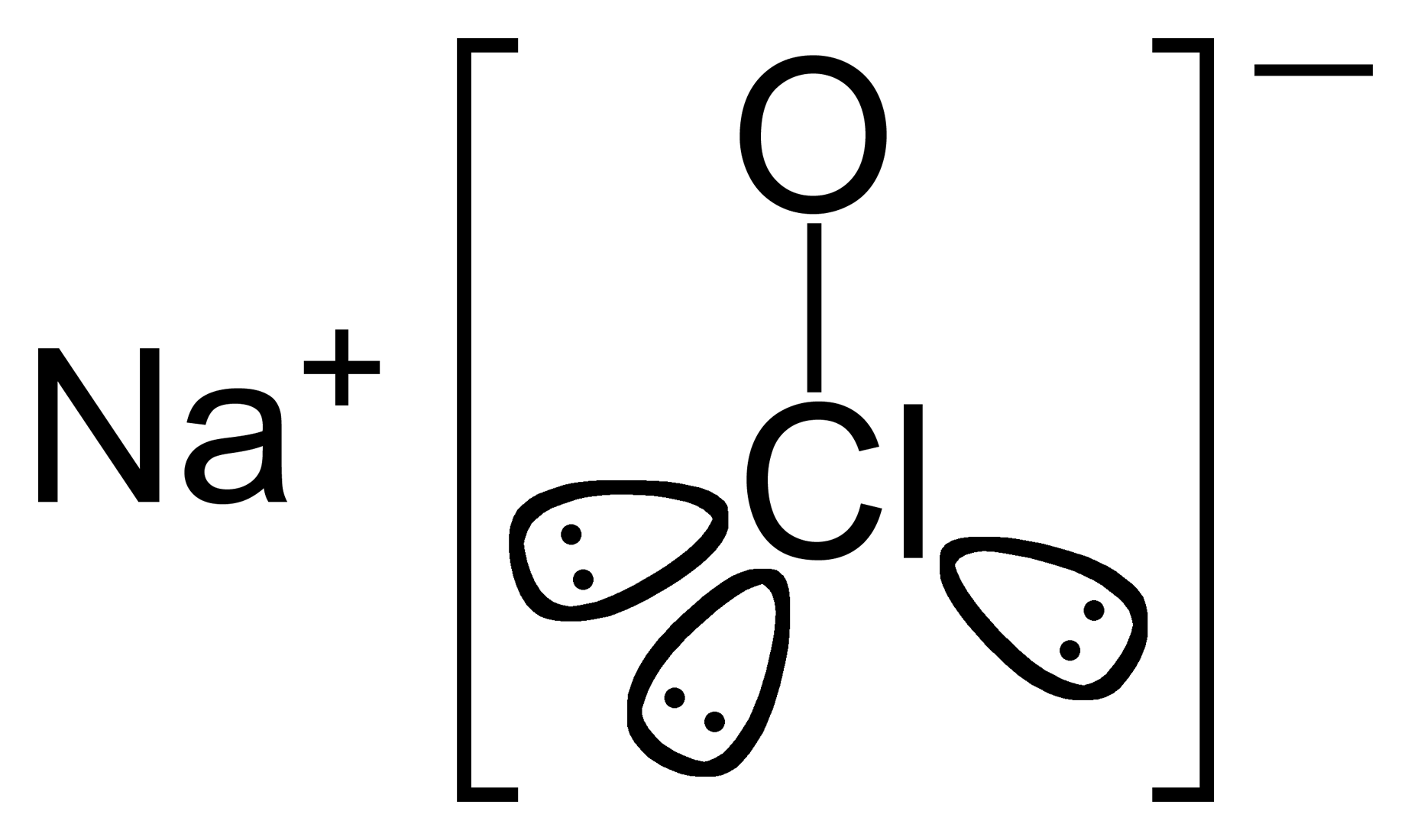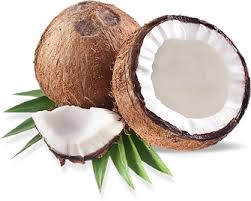Sodium Hypochlorite Production in Nigeria (Using Salt Brine As Raw Materials); The Feasibility Report.

Hypochlorites are chemical compounds containing the chlorate (I) anion ([OCl]). It is a greenish – yellowish liquid commonly referred to as “Bleach”.
Sodium Hypochlorite (NaOCl) is a compound that can be effectively used for surface purification, water disinfectants (Disinfectants are microbial agents that are applied to non-living objects to destroy microorganisms, the process of which is known as disinfection), bleaching, odour removal etc. It has a relative density of one point one (1.1) [five point five percent (5.5%) water solution].
It is unstable and chlorine evaporates. It is strong oxidizer and reacts with flammable compounds however its solution is a weak base that is inflammable.
Sodium Hypochlorite is prepared by reacting dilute caustic soda solution with liquid or gaseous chlorine, accompanied by cooling. Sodium Hypochlorite can also be produced from the electrolysis of salt brine.
Nigeria has an estimated reserve of about one billion, five hundred million (1,500,000,000) tons of salt brine.Caustic soda is produced together with chlorine from the electrolysis of salt brine.
The products so produced would react together and produce sodium hypochlorite (Chlorine Bleach at twelve (12%) strength).
Sodium hypochlorite is available as solutions of varying strength. Concentrated solutions for disinfection purposes may contain ten to eighteen percent (10-18%) available chlorine; domestic and laundry bleaches typically contain three to five percent (3-5%) available chlorine; antiseptic solutions may contain only about one percent (1%) chlorine.
Sodium Hypochlorite (NaOcCl) is a pale greenish liquid also known as soda bleach or liquid bleach.Sodium hypochlorite is a basic inorganic chemical with a wide variety of uses.
It is used within industry to manufacture other substances, to treat textiles and as a powerful biocide for industrial sites (such as treatment of water for cooling systems).
The substance is used professionally to disinfect public swimming pools and public water supplies, and as a disinfectant by professional cleaners. It is used by the public as a general all-purpose disinfectant, cleaner and bleach within the home.
Some consumer formulations include a spray bottle, which can form weak sodium hypochlorite aerosols.
Globally, industrial and household applications for sodium hypochlorite are forecast to grow at a rate of one point nine percent (1.9%) annually during 2015–20. This compares with a projected growth in global demand for all disinfectants and microbials of three to five percent (3-5%) annually during 2015–20 for both household and industrial uses. Much of this growth is related to consumer concern over foodborne pathogens and outbreaks of influenza.
The leading application is municipal/industrial water treatment disinfection, which accounted for about sixty-two percent (62%) of total industrial consumption.
From the above list it can be seen that the market for sodium hypochlorite is wide, expanding and sustainable and it cuts across industries like paper, agriculture, water, food, chemical and petrochemicals, each of which has high annual demand.
The national demand estimates for sodium hypochlorite in Nigeria is in excess of five hundred thousand (500,000) tons per annum with most of the demand been met through importation.
This report highlights the financial viability or otherwise of establishing a sodium hypochlorite (Chlorine Bleach at twelve percent (12%) strength) plant in Nigeria using industrial salt of ninety-nine point seven percent (99.7%) purity as the raw material.
The plant would also produce caustic soda flakes of (98-99% grade), hydrochloric acid (32% grade) and liquid chlorine.
Caustic Soda is also known as Sodium Hydroxide (NaOH). It is an important industrial chemical product produced in both liquid & solid form. It is deliquescent, absorbing water vapour and carbon dioxide from the air.
Caustic soda or sodium hydroxide, is a white crystalline solid substance which usage cuts across virtually all the sectors of the economy chemical, textile, pharmaceutical, oil and gas.
Since it is a strong alkaline which can easily dissolve with water, it is used as a cleaning agent for many household and industrial purposes. It can easily absorb gases like carbon dioxide and sulphur dioxide; hence it can be used in the treatment of heavy metals, extraction of ores, in refining oil and in many other processes and uses.
The physical form of sodium hydroxide can be in the form of pellets, wafers, solids or even liquid solutions. Purity ranges from thirty-two percent (32%) Na2O to ninety-nine percent (99%) Na2O and it is highly corrosive to skin.
Caustic soda is used in the aluminum industry, pulp & paper. They are used as water treatment and water purification, as cleaning agent, or a wide range of uses in chemical industry like the starch production and for dyeing clothes, and what have you.
The global caustic soda market was valued was valued at $36.0 billion in 2018 and is projected to reach $55.8 billion by 2026, growing at a compound annual growth rate (CAGR) of five point five percent (5.5%) from 2019 to 2026.
Escalating demand across various industries such as textile, pulp & paper, organic chemicals, etc. is expected to strengthen the market growth. Rising demand for alumina in automobile industry especially in Asia Pacific is considered to stimulate the market growth.
Fluctuating prices due to high energy consumption and uneven production rates is likely to limit the market growth.
In Nigeria, the Raw Materials Research and Development Council(RMRDC) disclosed that in the last five years, the country (Nigeria) imported caustic soda valued at more than thirteen billion (₦ 13,000,000,000) for use by manufacturing firms, oil and gas sectors of the economy.
Chlorine gas is well known for its use in sterilizing drinking water and in particular swimming pool water. However, most chlorine is used in the chemical industry in the manufacture of other products.
Hydrochloric acid is a colorless inorganic chemical system with the formula H2O:HCl. Hydrochloric acid has a distinctive pungent smell.
It is mainly produced as a precursor to vinyl chloride for polyvinyl chloride (PVC). It is classified as strongly acidic and can attack the skin over a wide composition range, since the hydrogen chloride practically dissociates completely in solution.
Global hydrochloric acid market is poised to witness growth over the forecast period owing to increasing demand from application industries such as water treatment, food processing and oil & gas. In addition, growing hydrochloric (HCL) use in steel and pharmaceutical industry is expected to drive the hydrochloric (HCL) acid market over the next six (6) years.
The proposed plant would comprise of caustic soda plant, sodium hypochlorite plant, forklift, transformer, generator, project vehicles, weigh bridge, sodium hypochlorite and diesel tanks.
The capacity of the proposed plant is forty-two (42) tons per day for caustic soda flakes of (98-99% grade), twenty (20) tons of liquid chlorine gas per day, fifty-five (55) tons per day of hydrochloric acid (32% grade) and fifty (50) tons of sodium hypochlorite (Chlorine Bleach at twenty percent (12%) strength) per day.
The plant would operate at eighty percent (80%) of the installed capacity working three (3) shifts of eight (8) hours each in three hundred (300) days per annum producing one thousand, six hundred and eighty (1,680) tons of caustic soda flakes of (98-99% grade) purity, two thousand (2,000) tons of sodium hypochlorite (Chlorine Bleach at twelve percent (12%) strength), two thousamd, tow hundred (2,200) tons of hydrochloric acid (32% grade) and eight hundred (800) tons of liquid chlorine gas bi-monthly.
Table of Contents
EXECUTIVE SUMMARY 1.0 Business Overview 1.1 Description of the Business 1.2 Vision and Mission Statement 1.3 Business Objective 1.4 Value Proposition 1.5 Critical Success Factor of the Business 1.6 Current Status of Business 1.7 Description of the Business Industry 1.8 Contribution to Local and National Economy 2. Marketing Plan 2.1 Description of product 2.2 Product Packaging and delivery 2.3 The Opportunity 2.4 Pricing Strategy 2.5 Target Market 2.6 Distribution and Delivery Strategy 2.7 Promotional Strategy 2.8 Competition 3. Production Plan 3.1 Description of the Location 3.2 Raw Materials 3.3 Production Equipment 3.4 Production Process 3.5 Production Cost 3.6 Stock Control Process 3.7 Pre-Operating activities and expenses 3.7.1 Operating Activities and Expenses 3.8 Project Implementation Schedule 4.0 Organizational and Management Plan 4.1 Ownership of the business 4.2 Profile of the promoters 4.3 Key Management Staff 4.3.2 Management Support Units 4.4 Details of salary schedule 5. Financial Plan 5.1 Financial Assumption 5.2 Start- up Capital Estimation 5.3 Source of Capital 5.4 Security of Loan 5.5 Loan Repayment Plan 5.6 Profit and Loss Account 5.7 Cash Flow Analysis 5.8 Viability Analysis 6.0 Business Risks and SWOT Analysis 6.1 Business Risks 6.2 SWOT Analysis
Project Specification:
Additional Info
Get this Report
Direct bank transfer
To order the report, Please do pay the sum of ₦300,000 into
Account Name : Foraminifera Market Research Ltd
Account Number : 274 20 569 37
Account Name : Foraminifera Market Research Ltd
Account Number : 101 76 603 95
Account Name : Foraminifera Ventures
Account Number : 011 66 066 32
Make your payment directly into our bank account. Please use your Order ID as the payment reference. Your order will not be shipped until the funds have cleared in our account.
Instructions
After payment call us on 01 -29 52 413 / 08033782777 or email us at foraminiferamarketresearch@yahoo.com with the payment details. After payment confirmation, the soft copy of the report would be sent to you within 24 hours.



